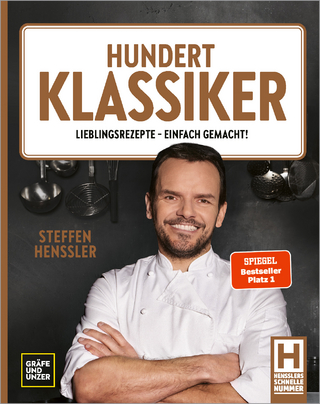
Fundamentals of Food Process Engineering
Springer-Verlag New York Inc.
978-1-4615-7057-8 (ISBN)
1 Review of Mathematical Principles and Applications in Food Processing.- Graphing and Fitting Equations to Experimental Data.- Roots of Equations.- Differential Calculus.- Integral Calculus.- Problems.- Suggested Reading.- 2 Units and Dimensions.- Definition of Terms.- Systems of Measurement.- The SI System.- Conversion of Units.- The Dimensional Constant (gc).- Determination of Appropriate SI Units.- Dimensional Consistency of Equations.- Conversion of Dimensional Equations.- Problems.- Suggested Reading.- 3 Material Balances.- Basic Principles.- Material Balance Problems Involved in Dilution, Concentration, and Dehydration.- Blending of Food Ingredients.- Multistage Processes.- Problems.- Suggested Reading.- 4 Gases and Vapors.- Equations of State for Ideal and Real Gases.- Thermodynamics.- Vapor-Liquid Equilibrium.- Problems.- Suggested Reading.- 5 Energy Balances.- General Principles.- Energy Terms.- Heat.- Properties of Saturated and Superheated Steam.- Heat Balances.- Problems.- Suggested Reading.- 6 Flow of Fluids.- The Concept of Viscosity.- Rheology.- Continuous Viscosity Monitoring and Control.- Flow of Falling Films.- Transportation of Fluids.- Problems.- Suggested Reading.- 7 Heat Transfer.- Mechanisms of Heat Transfer.- Temperature-Measuring Devices.- Steady-State Heat Transfer.- Local Heat Transfer Coefficients.- Unsteady-State Heat Transfer.- Problems.- Suggested Reading ö..- 8 Kinetics of Chemical Reactions in Foods.- Theory of Reaction Rates.- Types of Reactions.- Enzymatic Reactions.- Reaction Order.- The Reaction Rate Constant.- Temperature Dependence of Reaction Rates.- Problems.- Suggested Reading.- 9 Thermal Process Calculations.- Processes and Systems for Stabilization of Foods for Shelf Stable Storage: Systems Requirements.- Microbiological Inactivation Rates at Constant Temperature.- Effect of Temperature on Thermal Inactivation of Microorganisms.- Sterilization of Continuously Flowing Fluids.- Sterilizing Value of Process Expressed as F0.- Thermal Process Calculations for Canned Foods.- Broken Heating Curves.- Quality Factor Degradation.- Problems.- Suggested Reading.- 10 Refrigeration.- Mechanical Refrigeration System.- The Refrigeration Cycle on the Pressure Enthalpy Diagram for a Given Refrigerant.- Example Problems on the Use of Refrigerant Charts.- The Condenser and Evaporator.- The Compressor.- Refrigeration Load.- Commodity Storage Requirements.- Controlled Atmosphere, Storage.- Problems.- Suggested Reading.- 11 Evaporation.- Single Effect Evaporators.- Improving the Economy of Evaporators.- Essence Recovery.- Problems.- Suggested Reading.- 12 Dehydration.- Water Activity.- Mass Transfer.- Psychrometiy.- Simultaneous Heat and Mass Transfer in Dehydration.- The Stages of Drying.- Prediction of Drying Times from Drying Rate Data.- Spray Drying.- Freeze Diying.- Problems.- Suggested Reading.- 13 Physical Separation Processes.- Filtration.- Sieving.- Gravity Separations.- Problems.- Suggested Reading.- 14 Extraction.- General Principles.- Diffusion.- Solubility.- Equilibrium.- Solid Liquid Extraction: Leaching.- Supercritical Fluid Extraction.- Problems.- Suggested Reading.- Appendixes.- Appendix A-1. Conversion Factors Expressed as a Ratio.- Appendix A-2. Properties of Superheated Steam.- Appendix A-3. Saturated Steam Tables—English Units.- Appendix A-4. Saturated Steam Tables—Metric Units.
| Erscheint lt. Verlag | 18.5.2012 |
|---|---|
| Zusatzinfo | XV, 602 p. |
| Verlagsort | New York, NY |
| Sprache | englisch |
| Maße | 155 x 235 mm |
| Gewicht | 943 g |
| Themenwelt | Sachbuch/Ratgeber ► Essen / Trinken ► Grundkochbücher |
| Technik ► Lebensmitteltechnologie | |
| ISBN-10 | 1-4615-7057-3 / 1461570573 |
| ISBN-13 | 978-1-4615-7057-8 / 9781461570578 |
| Zustand | Neuware |
| Haben Sie eine Frage zum Produkt? |
aus dem Bereich


